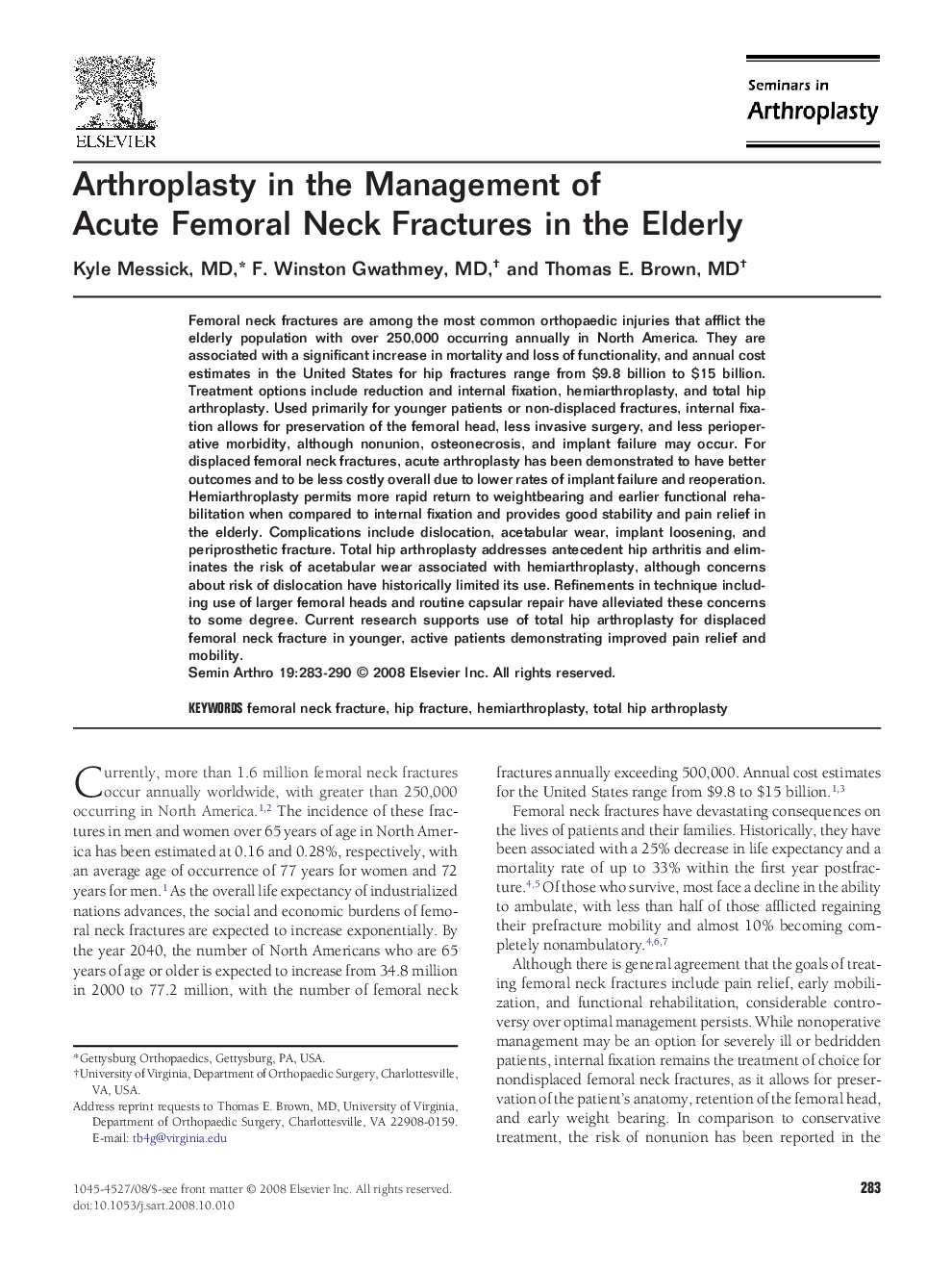| Article ID | Journal | Published Year | Pages | File Type |
|---|---|---|---|---|
| 4094277 | Seminars in Arthroplasty | 2008 | 8 Pages |
Femoral neck fractures are among the most common orthopaedic injuries that afflict the elderly population with over 250,000 occurring annually in North America. They are associated with a significant increase in mortality and loss of functionality, and annual cost estimates in the United States for hip fractures range from $9.8 billion to $15 billion. Treatment options include reduction and internal fixation, hemiarthroplasty, and total hip arthroplasty. Used primarily for younger patients or non-displaced fractures, internal fixation allows for preservation of the femoral head, less invasive surgery, and less perioperative morbidity, although nonunion, osteonecrosis, and implant failure may occur. For displaced femoral neck fractures, acute arthroplasty has been demonstrated to have better outcomes and to be less costly overall due to lower rates of implant failure and reoperation. Hemiarthroplasty permits more rapid return to weightbearing and earlier functional rehabilitation when compared to internal fixation and provides good stability and pain relief in the elderly. Complications include dislocation, acetabular wear, implant loosening, and periprosthetic fracture. Total hip arthroplasty addresses antecedent hip arthritis and eliminates the risk of acetabular wear associated with hemiarthroplasty, although concerns about risk of dislocation have historically limited its use. Refinements in technique including use of larger femoral heads and routine capsular repair have alleviated these concerns to some degree. Current research supports use of total hip arthroplasty for displaced femoral neck fracture in younger, active patients demonstrating improved pain relief and mobility.
